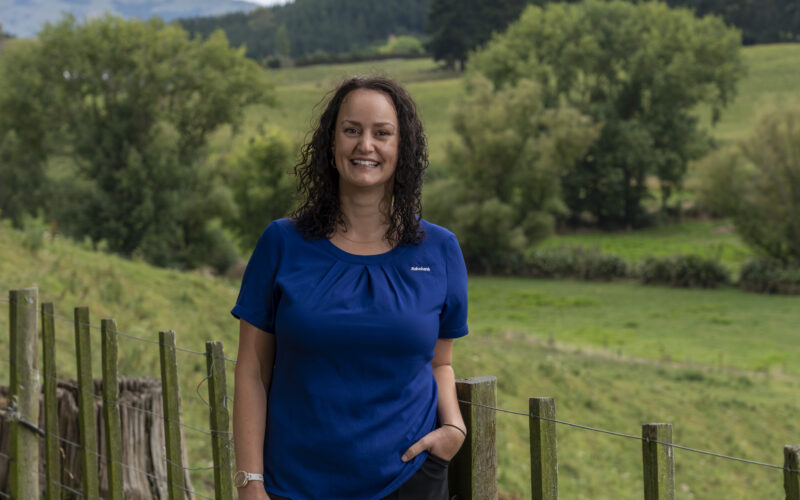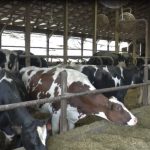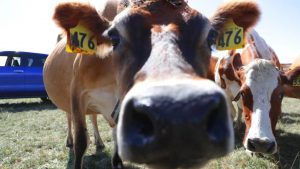
Cautious optimism from farmers greets one of the highest forecasts in Fonterra’s history.
Fonterra’s new $9.50/kg MS forecast midpoint has been met with celebration and caution by analysts and farmers as many recover from two tough seasons.
The forecast update comes on the back of strong demand for commodities, which also helped lift prices in recent Global Dairy Trade auctions.
Fonterra has also narrowed its forecast range from $8.25-$9.75/kg MS to $9.00-$10/kg M, a reflection of the fact that more sales have been contracted for 2025 since the last forecast update in September.
It’s among the highest forecasts in Fonterra’s history. In February 2022, it forecast $9.30-$9.90/kg MS with a midpoint of $9.60/kg MS.
Dairy farming members of Waikato Federated Farmers said that while the $9.50/kg MS payout looks rosy, there is a slight lag before its economic benefits are seen.
Many farmers made financial losses over the past two seasons and this extra money will help claw back that recovery.
Morrinsville farmer Mike Garrud said high interest rates are still an issue for some farmers.
Provincial vice-president Andrew Reymer said the lift in the advance rate has been a huge help. The November paid December payment at $7.60/kg MS and the December paid January payment at $8.05/kg MS.
“The key message is to do your budgets through to next spring, not just to June,” he said.
Rabobank senior agricultural analyst Emma Higgins said costs such as feed and fertiliser have become more affordable for dairy farmers.
“Right now, everything is moving in the right direction with costs coming down and milk prices coming up. Margins are much improved from where they are 12 months ago, and it’s been a similar story most places around the globe.”
Global dairy markets – particularly China – are at an inflection point with domestic prices sliding to their weakest point in over a decade.
This reflects the fact that it has too much milk in the market, which came off a period of growth since 2018. The extra milk has lifted self-sufficiency rates in China to 75% while at the same time its economy faltered.
“The slowdown from that price pressure is starting to emerge,” Higgins said.
This is manifesting itself in several ways, with smaller farms exiting or consolidating as well as farms with larger herds being impacted. Dairy herds are being resized with a focus on productivity and efficiency.
“We are now at the point where we are starting to see milk supply slow down across quarter three (2024). Milk production from quarter one to three has declined by 0.1%.
“We’re cautiously optimistic because there are still some challenges to work through.”
One of these is in China’s consumer market, where domestic milk prices have not improved and demand is still slow. It suggests this market still has over-supply issues.
“There’s still sluggish demand on many metrics and that’s the cautious part.”
In North America, a clearer picture should emerge of the impact H5 bird influenza has had on milk production once October data is released. These animal health challenges should put headwinds in place for strong milk production growth, Higgins said.
“We think milk supply globally from those exporting regions is likely to lift as we go through to next year. We think it’s going to be a rate that’s manageable for markets.”
“The risk for New Zealand dairy farmers is we see that seesaw come through again in dairy commodity prices.”
Production takes time to turn around and there is a risk of a possible overshoot from China leading to a boom-bust situation, she said.
Waikato Chamber of Commerce chair Peter Nation said it is still too early to tell if the forecast increases have led to more spending and confidence in provincial towns around the region.
But there are positive signs. On November 15, the Chamber held the Waikato Business Awards with 740 people attending and 80 entries.
Many of these businesses have some involvement in agribusiness.
Consumer spending in retail will take a while to pick up with interest rates and other living costs still on the high side, he said.
You can now read the most important #news on #eDairyNews #Whatsapp channels!!!
🇺🇸 eDairy News INGLÊS: https://whatsapp.com/channel/0029VaKsjzGDTkJyIN6hcP1K

























